I recently had the opportunity to help Kristin Norderval build a hemispherical speaker for use in the jill sigman/thinkdance production, Our Lady of Detritus, engagingly described as “a portable, interdisciplinary performance installation about trash and transcendence; a traveling grassroots campaign fueled by experimentation, green energy sources and community interaction.” The show is presented every weekend through mid-October at various locations around New York City. See here for details.
The speaker was based on the Princeton Laptop Orchestra (PLOrk) Delorean speaker and the Stanford Laptop Orchestra (SLOrk) speakers.
Enclosure
We used an Ikea salad bowl for the enclosure just like the SLOrk speakers.
Amps
We pulled 3 Dayton T-amps from their enclosures and mounted them on the inside of the bottom plate of the speaker cabinet.
Speakers
We used 6 4″ Inifinity 4022i drivers.
Volume Pots and Connectors
The Dayton amps had combination volume and power pots, so we decided to keep them rather than source and wire up a 6-position potentiometer. A little Dremel routing magic made mounting the volume pots easier than I expected. A coaxial power jack and 6-pin Neutrik XLR jack and plug rounded out the connectors.
-
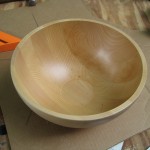
-
salad bowl – top view
-

-
salad bowl – bottom view
-

-
salad bowl – detail showing Ikea part number
-
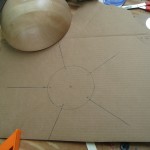
-
salad bowl and template for marking the position of the 5 “equatorial” speakers
-
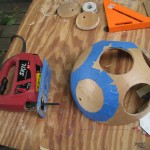
-
cutting holes for speakers
-

-
We used masking tape to prevent the jigsaw from scratching the bowl
-

-
Kristin demonstrating the dispersion pattern of the enclosure
-
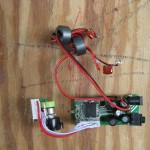
-
A naked Dayton T-amp with the speaker connections on top and the volume pot on the left
-
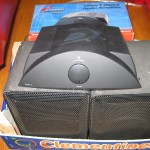
-
A Dayton T-amp before disassembly
-
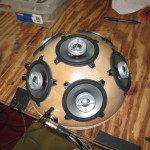
-
finished hemi – with audio and power connectors on the left
-
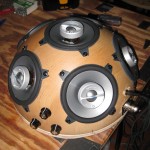
-
finished hemi – with 3 volume pots on the left
-
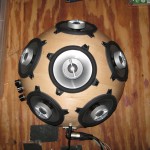
-
finished hemi – top view
The speaker sounds good–punchy and more powerful than I expected, particularly considering the 4″ drivers. I’ll be building one for myself soon.












